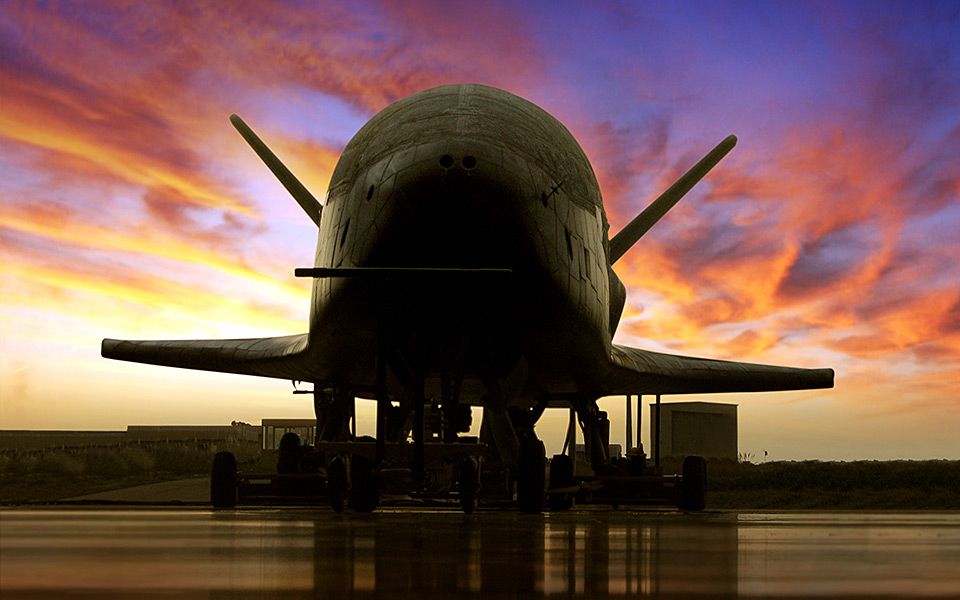China’s mystery reusable spaceplane lands after 276 days in orbit
HELSINKI — China’s secretive reusable spaceplane completed its second mission Monday, landing after 276 days in orbit.
China state media and the spacecraft’s maker, the China Aerospace Science and Technology Corp. (CASC), announced the spacecraft had landed late May 8 Beijing time.
The apparently successful mission was stated to be an important breakthrough in the country’s research on reusable spacecraft technology. No images, landing time nor location were revealed by the terse announcements.
The project will provide a more convenient and inexpensive way to access space for the peaceful use of space in the future, according to the statement.
The reusable test spacecraft launched from Jiuquan Satellite Launch Center in the Gobi Desert Aug. 4 (UTC), 2022.
The spacecraft released an object into orbit, U.S. Space Force tracking data revealed late last year. The small satellite operated in very close proximity to the spaceplane.
This apparent second flight on the secretive spacecraft differs from its first mission in 2020. That flight saw the spaceplane orbit for four days in a 331 by 347-kilometer orbit inclined by 50 degrees. The just completed mission lasted 276 days, with the spacecraft entering an initial 346 by 593 kilometer orbit inclined by 50 degrees, then circularizing the orbit to 597 by 608 kilometers.
The spacecraft performed numerous small and much larger orbital maneuvers during its flight, with adjustments in recent weeks made in preparation for landing.
The landing is likely to have taken place at the Lop Nur military base in Xinjiang. Information on the spacecraft’s orbit suggests an orbital track over the facility around 0020 UTC provided the opportunity for landing, according to Jonathan McDowell, an astrophysicist and tracker of spaceflight activities.
An image from an Umbra synthetic aperture radar satellite suggests recent activity at the Lop Nur site.
A synthetic aperture radar satellite view from the expected landing site, three hours after the landing is thought to have taken place: https://t.co/aopXJfQwMR — Andrew Jones (@AJ_FI) May 8, 2023
China has released little information about the project. The size and mass of the spacecraft is however constrained by the use of the Long March 2F rocket, which can carry just over 8 tons to low Earth orbit.
Clues as to the dimensions and shape of the craft appeared shortly after launch when apparent images of the payload fairing for the mission appeared online.
Fairing of CZ2F rocket which launched CSSHQ on Aug 5 being openly exhibited in Henan Jiyuan No.1 middle school. If the bumps are spare spaces for wings, CSSHQ’s wingspan could be larger than fairing’s diameter 4.2m. HD: https://t.co/aPZ6MvDdZq Credit: TikTok Douyin@hnsjydyzx pic.twitter.com/6i3mXPvFLe — CNSA Watcher (@CNSAWatcher) August 14, 2022
The spacecraft appears to be related to the development of an orbital segment of a fully reusable two-stage-to-orbit space transportation system. A suborbital segment—featuring a vertical takeoff and horizontal landing—had a second flight in September 2022.
CASC’s reusable spaceplane project last year acquired national level funding from the Natural Science Foundation of China.
CASIC, a sister giant defense and space contractor, is working on its own spaceplane, named Tengyun.
Meanwhile a commercial firm named Space Transportation raised more than $46.3 million for its hypersonic spaceplane plans in 2021. A number of Chinese rocket companies have also created presentations including small spaceplanes launching atop concepts for liquid rockets.
China has been seeking to boost its access to space in a range of ways in recent years, including fostering a commercial space sector which now features a range of operational solid and in-development reusable liquid propellant reusable launch vehicles.
CASC, the country’s main space contractor, is meanwhile developing new, super heavy-lift reusable launch vehicles which enable the country to attempt to land astronauts on the moon and an eventually fully-reusable rocket for conducting large scale space infrastructure missions.
Source: SpaceNews


